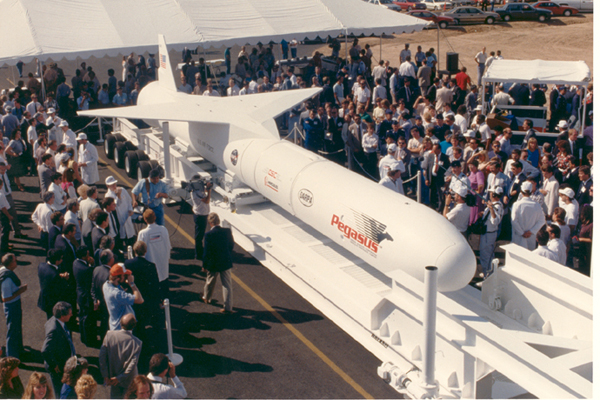Space History Photo: Pegasus

In this historical photo from the U.S. space agency, a Pegasus launch vehicle lays on the ground before its flight on a B-52 in Sept. 1989.
An air-launched, three stage, all solid- propellant, three-axis stabilized vehicle, the Pegasus can set a 400-1,000 pound payload into low-Earth orbit. For more information about Pegasus, please see Chapter 5 in Roger Launius and Dennis Jenkins' book To Reach the High Frontier published by The University Press of Kentucky in 2002.
Each weekday, SPACE.com looks back at the history of spaceflight through photos (archive).
Breaking space news, the latest updates on rocket launches, skywatching events and more!

The National Aeronautics and Space Administration (NASA) is the U.S. government agency in charge of the civilian space program as well as aeronautics and aerospace research. Founded in 1958, NASA is a civilian space agency aimed at exploring the universe with space telescopes, satellites, robotic spacecraft, astronauts and more. The space agency has 10 major centers based across the U.S. and launches robotic and crewed missions from the Kennedy Space Center in Cape Canaveral Florida. Its astronaut corps is based at the Johnson Space Center in Houston. To follow NASA's latest mission, follow the space agency on Twitter or any other social channel, visit: nasa.gov.
